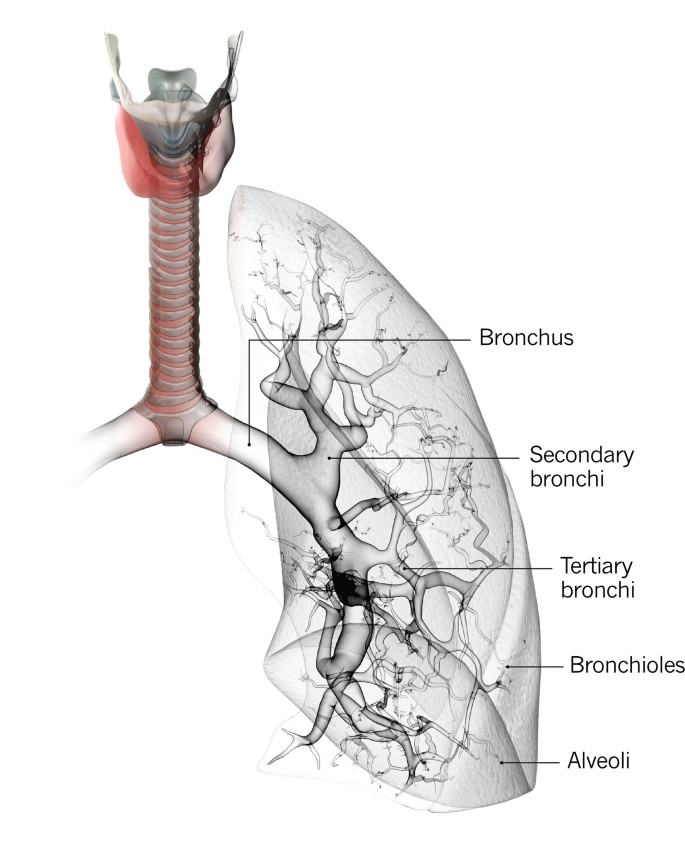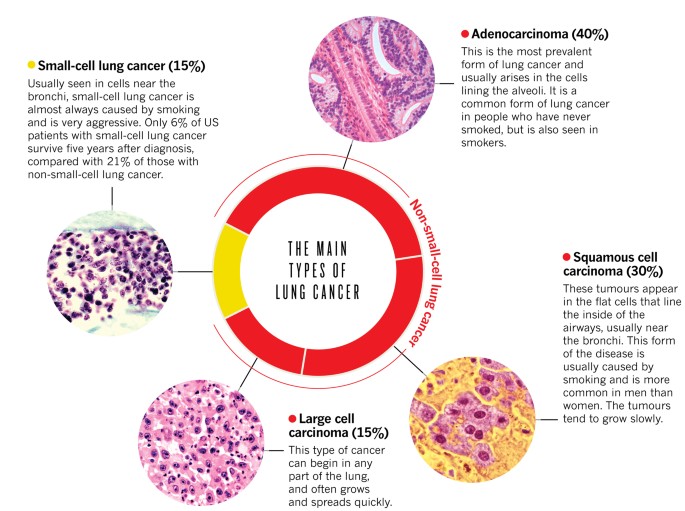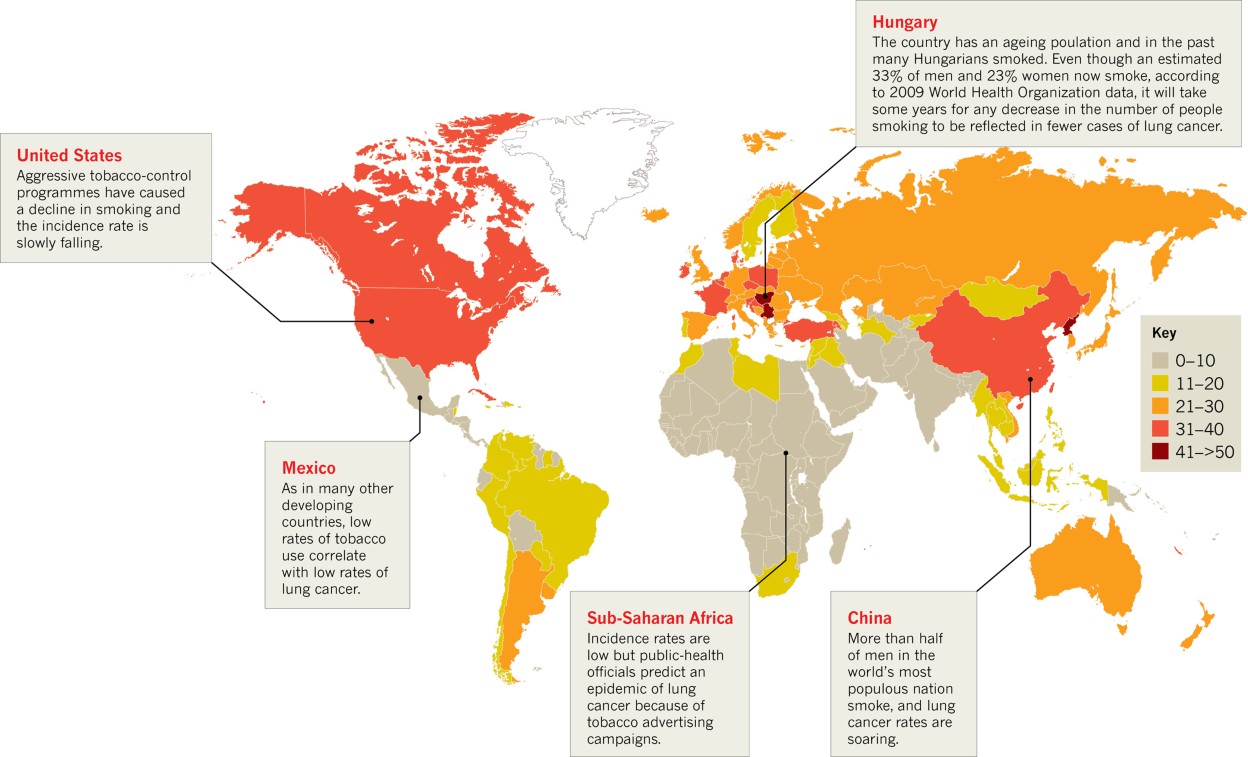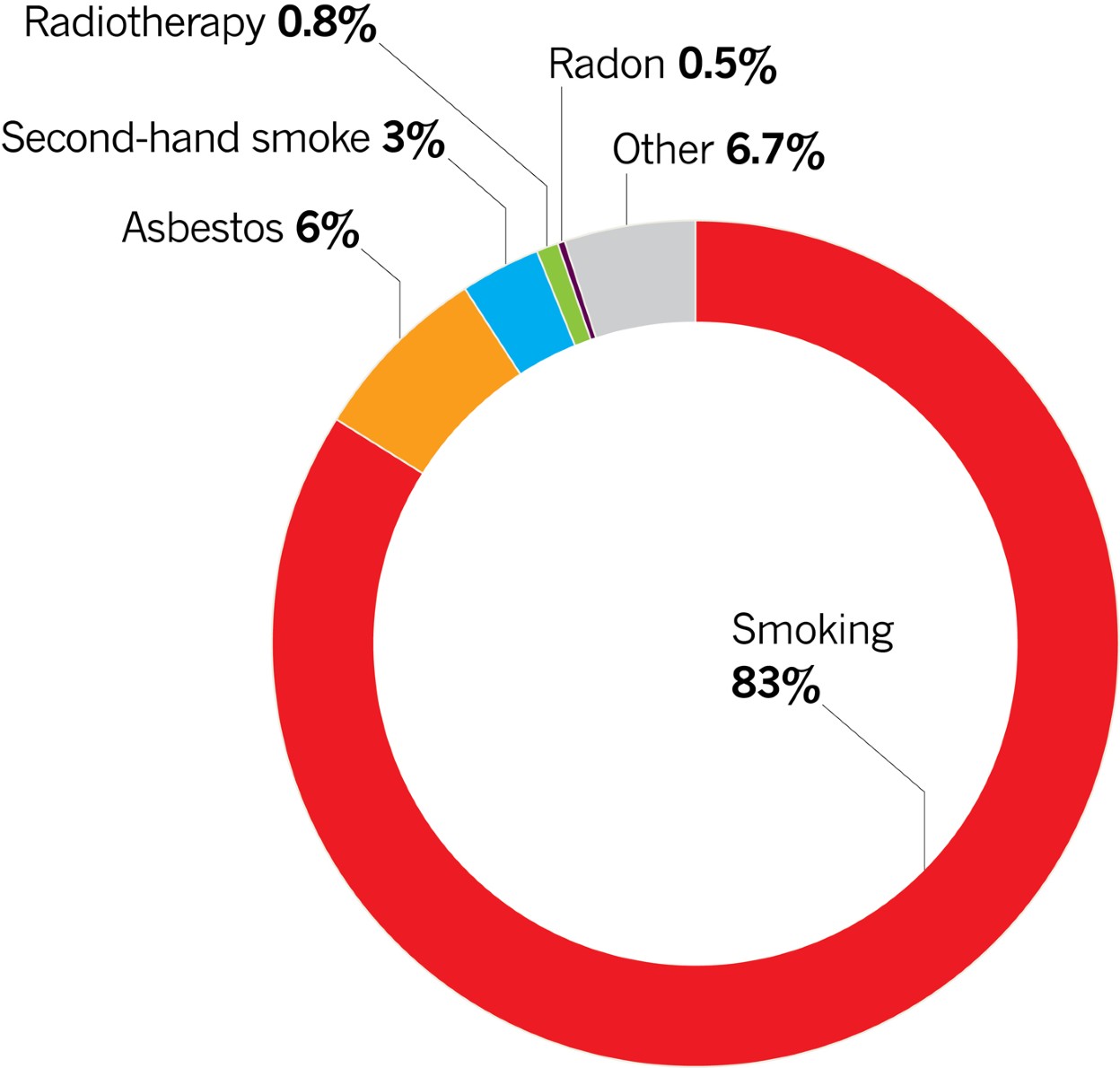Epidemiology: The dominant malignancy (original) (raw)
Lung cancer is the leading cause of cancer mortality. In some countries, incidence rates are dropping but survival rates for those with the disease remain low. By Eric Bender.
Marks of a killer: Lung physiology
Lung cancer is categorized by cell type into non-small-cell lung cancer — of which the three main subtypes are adenocarcinoma, squamous cell carcinoma and large cell carcinoma — and small-cell lung cancer. Treatment and prognosis differ depending on the type of lung cancer1.

LUNGS: SCIENCE PICTURE CO/SPL
Marks of a killer: The main types of lung cancer

CELLS, CLOCKWISE FROM TOP: STEVE GSCHMEISNER/SPL; BIOLOGY PICS/SPL; GLADDEN WILIS, VISUALS UNLIMITED /SPL
A world of risk
Annual incidence risks of lung cancer per 100,000 people in 2012. Tobacco is the main cause of the disease, but about one-tenth of lung-cancer patients have never smoked5.

A world of risk: Estimated worldwide cancer mortality, 2012

Public-health case study: United Kingdom — lung cancer risk factors
Estimated causes of lung cancer in Britain, 20142. Most cases of lung cancer are attributable to smoking, and so could be prevented.

Public-health case study: Worldwide — lost years
The impact of the disease is climbing quickly in China, as a result of the rapidly increasing number of smokers (see 'Public-health case study: China — Smoke rises', below')3.

Public-health case study: China — smoke rises
The population of smokers, dominated by men, continues to rise in China, where tobacco kills an estimated 3,000 people a day3,4.

Public-health case study: South Africa — cigarette consumption and cost
Around the world, higher taxes on tobacco lower smoking rates. In South Africa6,7, overall retail prices have risen substantially since 1991 and cigarette sales have plummeted.

Public-health case study: United States — annual price of lung cancer
A debate continues over how much screening would cost, but proposed support from Medicare is a fraction of the spend on tobacco marketing. Annual price of lung cancer data sources8,9,10,11,12.

Change history
12 September 2014
References
- US National Cancer Institute, Surveillance, Epidemiology, and End Results Program Cancer Statistics Review 1975–2011
- Cancer Research UK
- Institute for Health Metrics and Evaluation, University of Washington
- International Agency for Research on Cancer, World Cancer Report (2014)
- International Agency for Research on Cancer
- Belcher, E. Tob. Control 19, 325–330 (2010)
Article Google Scholar - Institute for Health Metrics and Evaluation, University of Washington
- US National Cancer Institute Cancer Trends Progress Report 2011/2012
- US Centers for Disease Control and Prevention
- Roth, J. A . et al. J. Clin. Oncol. 32 (Suppl.), 6501 (2014)
Article Google Scholar - United States Centers for Disease Control and Prevention
- US National Cancer Institute Cancer Trends Progress Report 2011/2012
Authors
- Eric Bender
You can also search for this author inPubMed Google Scholar
Related links
Rights and permissions
About this article
Cite this article
Bender, E. Epidemiology: The dominant malignancy.Nature 513, S2–S3 (2014). https://doi.org/10.1038/513S2a
- Published: 10 September 2014
- Issue Date: 11 September 2014
- DOI: https://doi.org/10.1038/513S2a